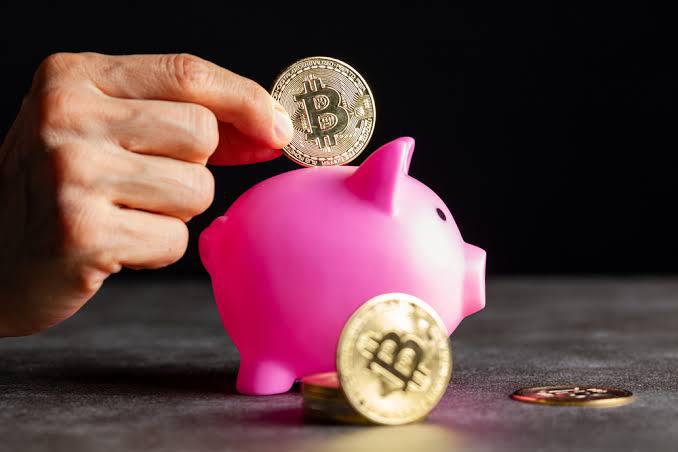Bitcoin, cryptocurrency, blockchain, etc. These are words defining technologies that have been in existence for a couple of years now and are most likely here to stay. To keep up with the trend of these technologies, it is better to start with understanding basic common terms that are readily associated with them.
Understanding Bitcoin
Bitcoin is the largest digital currency in existence today. It was created in 2009 by an unknown person or organization under the name Satoshi Nakamoto. Being the first digital currency to ever exist, the main goal of Bitcoin was (still is) to create a currency that does not rely on a central authority or government. This feature is called decentralization and it comes with many benefits for the everyday user — like lower transaction fees. When it was first created, it was worth only a couple of cents — below one dollar. Now, it is worth over $22,000.
Blockchain
It is a digital record of transactions — a decentralized ledger where individual records called blocks, are linked together in single list called a chain. This is the unique system/technology from which the Bitcoin currency is built. The blockchain technology is responsible for several important features we enjoy while using Bitcoin. For example, the blockchain technology is responsible for recording information in a way that makes it difficult or impossible to change, hack, or cheat the system. The blockchain technology also helps with Bitcoin’s decentralized feature. Finally, because this record is distributed across a network of computers, Bitcoin holders can confirm transactions without a need for a central clearing authority. Transactions can be easily monitored on the system, but it can not be altered, or hacked.
Cryptocurrency
This means digital or virtual currency. All digital currencies are cryptocurrencies, and vice versa. The cryptocurrency is secured by cryptography which makes it impossible to produce counterfeit. There are over 100 cryptocurrencies in circulation today, many of which are decentralized networks based on the blockchain technology. Bitcoin is the most popular of them all.
Cryptography
This is the security feature of cryptocurrencies. Using encryption, it provides for secure communication in the presence of malicious third-parties. This means that information can flow around easily, but with encryption, malicious persons would not have access to them. This feature is used to validate transactions, removing the need to have a trusted central authority reporting which transaction is valid and which is not. It also removes the possibility of producing counterfeit or fake currencies.
Decentralization
What this means is that Bitcoin has no central authority. This is a major advantage because the currency is not subject to any government directive that may bring about high transaction fees, or a difficult financial lifestyle. There is no central server; the bitcoin network is peer-to-peer, allowing users to transact directly without a middle man. There is no central storage; the bitcoin ledger is distributed thanks to the blockchain technology. Also, thanks to its decentralized feature, there is a limited monetary supply (not controlled by Government) which can make the value of the cryptocurrency increase over time.
Bitcoin Wallet
The Bitcoin wallet is a software that allows you to store, send and receive Bitcoin. The wallet feature is used for all cryptocurrencies because they are digital currencies. It is only sensible that a software is used to collect and store them safely. They are of two types; Hot and Cold wallet. The hot wallet is the type that is connected to the internet. For example, your Cordial Exchange wallet secured on our platform. It is more convenient to use because you can decide to trade anytime and anywhere. The cold wallet (also known as hard wallet) is not connected to the internet, neither is it as convenient. The software is usually installed physically on a USB drive.
Bitcoin Mining
This is the process of adding new Bitcoin to the ones already in supply. It is done by experts who have to solve complex mathematical problems with powerful computers to process these transactions, and unlock new Bitcoin by adding new blocks to the blockchain. Remember only 21 million Bitcoin can be in supply ever. As of today, 18.5 million Bitcoins have been mined. This leaves about 2 million Bitcoin left. Once all the Bitcoins have been mined, there would be no need to mine Bitcoins anymore.
Satoshi
Besides being the popular name accredited to the creation of Bitcoin — Satoshi Nakamoto, Satoshi is also the name of the smallest unit of Bitcoin. It represents one hundred millionth of a single Bitcoin — tiniest fraction (0.0000000001).
Exchange
This usually refers to an online platform where users can exchange one cryptocurrency for another. Some Exchanges, like Cordial Exchange, also allow users to exchange crypto currencies for fiat currencies (like your legal tender), and vice versa.
Stable coins
These are cryptocurrencies which are designed to create price stability. By so doing, their market value is backed by reserved, stable assets — a fiat currency (e.g., the US dollar) or a commodity (e.g., gold). The idea behind stable coins is to gain traction by attempting to offer the best of both worlds i.e., the instant processing and security / privacy of payments with cryptocurrencies, and the volatility-free stable valuations of fiat currencies.
Anonymity
This is another feature of the Bitcoin currency. It is not absolutely anonymous, but it is anonymous in the sense that certain components of Bitcoin, such as addresses, transactions, are made public, but they are in no way directly linked to anyone's personal identity. Every bitcoin transaction is publicly broadcasted on the Bitcoin blockchain.
Keep Learning! Check our featured post to read more, or choose a related post below.
Learn about basic common terms used in Bitcoin.







